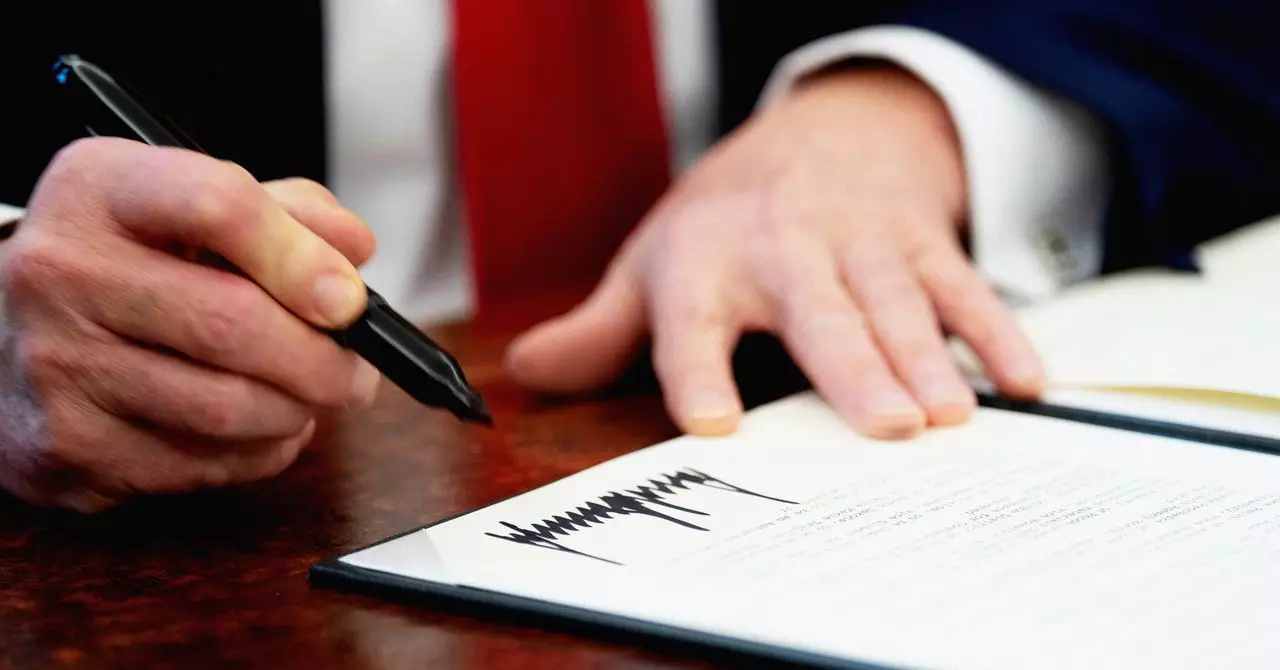In a notable step towards safeguarding individual privacy in the digital realm, the Take It Down Act has emerged as a significant legislative measure. Signed into law by former President Donald Trump, this act requires online platforms to address and remove nonconsensual intimate visual depictions within a stringent timeline of 48 hours upon receiving a formal request. The act aims to protect victims of digital violence by ensuring a swift removal process, imposing significant penalties of up to $50,000 per violation for companies that fail to comply. While the initiative boasts robust support from tech giants such as Google, Meta, and Microsoft, it fetches a myriad of opinions about its ripple effects on free speech and internet governance.
Public Safety vs. Free Speech
While the Take It Down Act seeks to furnish victims of nonconsensual imagery with a pathway to reclaim their dignity, it simultaneously sparks fierce debates around censorship and regulation on digital platforms. Critics argue that the absence of a comprehensive framework within the act could potentially empower malicious actors to misuse the law. Without clear penalties delineating bad faith removals, there is a palpable risk that fraudulent claims could proliferate, jeopardizing legitimate free expression online. Compared to its predecessor, the Digital Millennium Copyright Act (DMCA), the Take It Down Act boasts a more expedited approach—yet this expedited timeline could significantly hamstring platforms’ capability to thoroughly vet takedown requests.
Implications for Tech Companies
The enforced compliance mechanism creates substantial pressure on tech companies, compelling them to quicken their decisions regarding content moderation. This rushed decision-making process introduces vulnerabilities. When companies are prompted to act fast, they may resort to removing content not just limited to intimate depictions, leading to blanket censorship. In an age where misinformation and malicious content proliferate, this tendency towards excessive precaution could result in the unwarranted erasure of vital information that holds societal value, thereby complicating the broader discourse on acceptable online content. The immediate summons for action could pressure firms to curtail robust discussions on sensitive yet pertinent issues.
International Context and Comparisons
The backdrop of global efforts to combat digital harassment reflects a broader trend among countries like India, which have implemented similar expedited removal policies. The enactment of such laws internationally highlights a rising recognition of individual rights in the digital sphere. However, the varying nuances in each country’s approach illuminate differing levels of commitment to protecting free speech against undue censorship. The challenge lies in crafting legislation that balances effective victim support while preserving the foundational tenets of digital dialogue. As tech firms prepare for further regulations, the concerted international push will necessitate alignment with ethical responsibilities to foster safer digital spaces.
Challenges Ahead: The Path of Enforcement
The Federal Trade Commission (FTC) holds the reins of enforcement under the Take It Down Act, wielding the power to penalize companies for perceived unfair practices. However, the act lacks assurance of fair procedural safeguards for those unjustly accused. Without a transparent appeals process, individuals subjected to erroneous removals may find their rights compromised without recourse. Critics voice concerns that this lack of procedural justice could set a dangerous precedent, encouraging a chilling effect that stifles expression across many platforms. As tech companies grapple with balancing compliance with user rights, the fear of financial repercussions may ignite a culture of overzealous censorship rather than protective action.
A Call for Thoughtful Legislation
The Take It Down Act, while undeniably designed with the intentions of eradicating digital violence, demands further contemplation and refinement. Lawmakers must consider not only the urgency of addressing sensitive content but also the broader implications of their policies on free speech. As discussions surrounding digital accountability evolve, the act stands as a pivotal case study, providing vital lessons in navigating the complex landscape of technology, privacy, and expression in the 21st century. The future of online discourse hinges upon our ability to strike the right balance—one that acknowledges the urgent need for protection without sacrificing fundamental freedoms.

